25 Biggest McDonald’s Food Fails You Don’t Want To Taste

McDonald’s has long been a staple in fast food, but not every menu item has been a hit. Some were too avant-garde, others poorly timed, and a few simply missed the mark in taste and appeal. This list delves into 25 of the most infamous culinary missteps by McDonald’s, showcasing items that left customers puzzled, unimpressed, or downright dissatisfied. From burgers with unconventional ingredients to dessert experiments that flopped, these selections highlight the company’s bold, albeit sometimes misguided, attempts to innovate. Join us as we explore these forgettable creations, and remember—sometimes, more isn’t always better.
1. McDLT
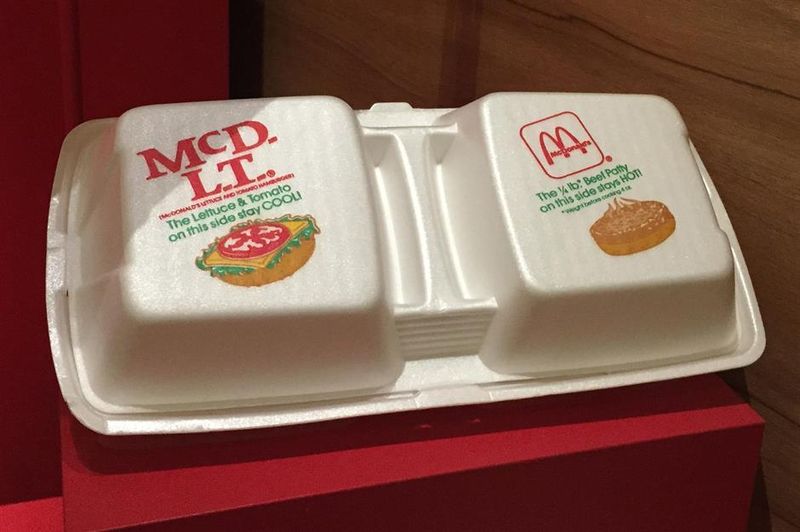
The McDLT was McDonald’s attempt to innovate burger packaging by separating hot and cold components. Introduced in the 1980s, it featured a two-compartment container that kept the beef patty warm and the lettuce and tomato cool. While the concept aimed to preserve the freshness of each element, it faltered due to its excessive packaging and awkward assembly process. Customers found it cumbersome to put together, and the environmental impact of the packaging was heavily criticized. Despite its initial appeal, the McDLT failed to become a lasting favorite and was eventually discontinued.
2. McSpaghetti
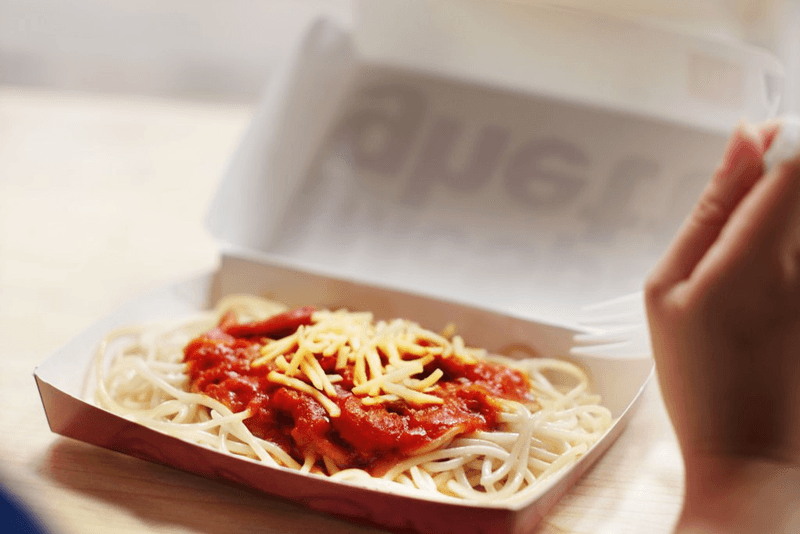
In a surprising departure from its burger-centric menu, McDonald’s introduced McSpaghetti, an attempt to offer Italian cuisine in fast-food form. The dish featured pasta topped with a tomato-based sauce and optional cheese. However, the execution left much to be desired—diners reported it as soggy, bland, and lacking the authentic flavors one would expect from Italian pasta. The incongruity of serving spaghetti alongside burgers and fries further confused customers. Ultimately, McSpaghetti was unable to carve out a niche and disappeared from most McDonald’s locations, remaining only in select markets with slight menu adaptations.
3. Arch Deluxe
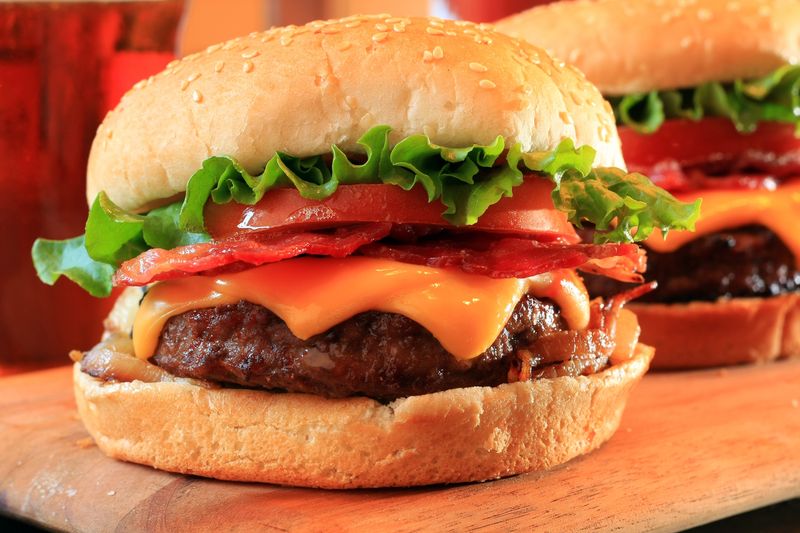
Touted as the “burger with grown-up taste,” the Arch Deluxe was McDonald’s attempt to appeal to a more sophisticated palate. It featured a quarter-pound beef patty, peppered bacon, lettuce, tomato, cheese, onions, ketchup, and a secret mustard-mayo sauce. Despite its premium ingredients, the high price tag and extensive marketing campaign couldn’t save it. Customers were not impressed, finding the taste underwhelming and the price unjustified. The Arch Deluxe’s failure highlighted the difficulty of repositioning a fast-food giant as purveyors of gourmet meals. It quietly exited the stage, remembered only by its ambitious advertising.
4. Hula Burger
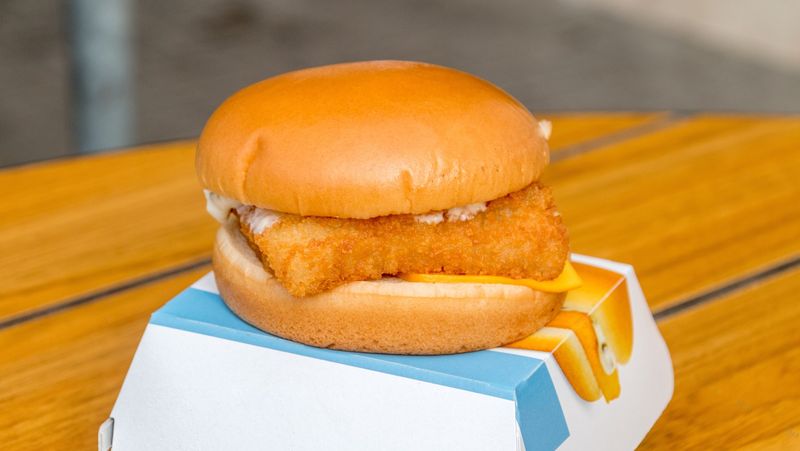
The Hula Burger was a unique creation aimed at providing a meat-free option for Catholic customers during Lent. It consisted of a slice of grilled pineapple nestled between two burger buns, accompanied by cheese. The unconventional combination was intended to offer a sweet and savory twist but ultimately failed to satisfy customers’ cravings for a substantial meal. The Hula Burger’s lackluster reception underscored the challenge of replacing meat with fruit in a traditionally meat-focused menu. Its brief existence was overshadowed by the Filet-O-Fish, which successfully captured the intended market.
5. McPizza
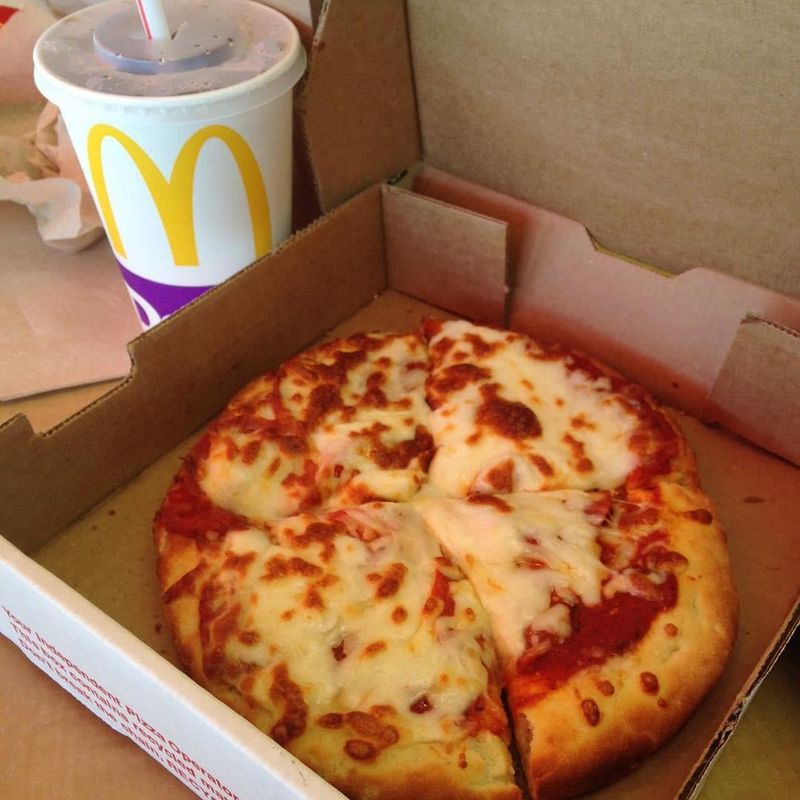
McDonald’s ambitious attempt to enter the pizza market resulted in the creation of McPizza. This personal-sized pizza aimed to offer a quick and affordable alternative to traditional pizzerias. However, the execution faced numerous obstacles—long preparation times, inconsistent quality, and logistical challenges with drive-thru service. Customers found the taste unremarkable, with toppings often unevenly distributed. Despite pockets of loyal fans, McPizza failed to achieve widespread popularity and was phased out from most locations, surviving only in a handful of restaurants in Canada, where it maintains a cult following.
6. Onion Nuggets
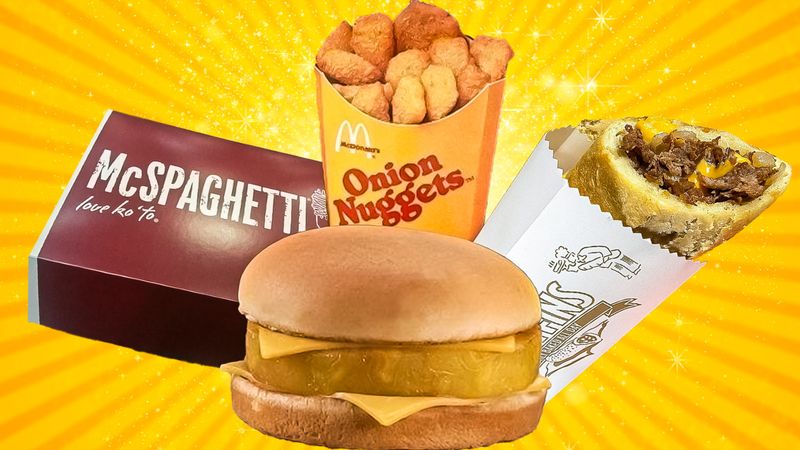
Before the widespread success of Chicken McNuggets, McDonald’s tested the waters with Onion Nuggets. These breaded and fried onion pieces were intended to replicate the appeal of chicken nuggets but with a vegetarian twist. Unfortunately, the greasy texture and overpowering onion flavor did not resonate with customers. The lack of a complementary dipping sauce further diminished their allure. Onion Nuggets failed to capture the same excitement as their poultry counterparts, leading to their discontinuation. This experiment served as a reminder of the challenges in adapting nugget-style offerings to different ingredients.
7. McLobster
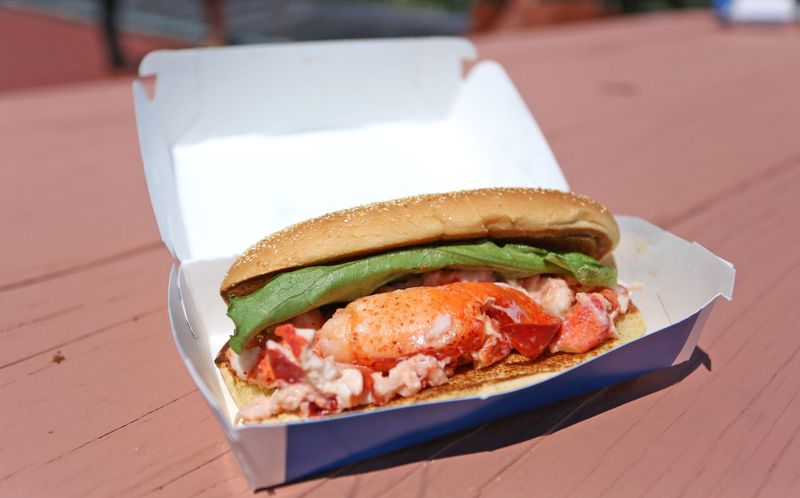
McDonald’s foray into seafood with the McLobster aimed to offer a taste of the coast at an accessible price point. Available seasonally, the sandwich featured lobster meat mixed with lettuce and a tangy dressing, served in a soft roll. Despite its enticing concept, the McLobster often disappointed due to its inconsistent quality. Customers reported rubbery texture and scanty portions, making it feel overpriced. This limited-time offering struggled to capture the authenticity of a true lobster roll, and while it remains a curious menu item, it is rarely seen outside of select regional markets.
8. McHotDog
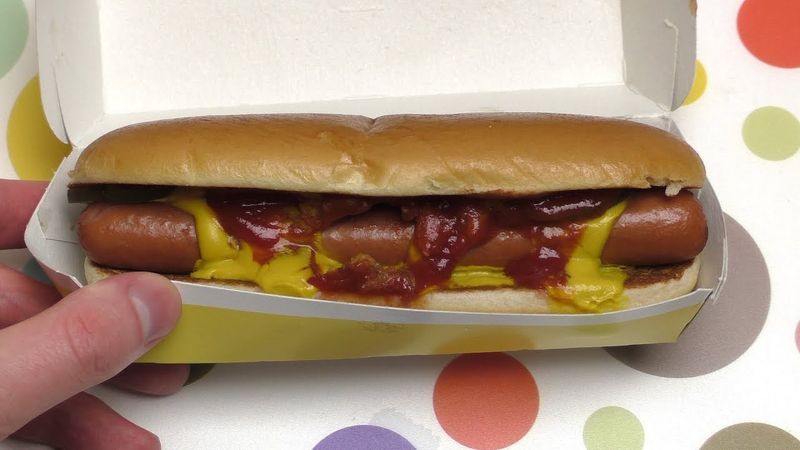
McDonald’s ventured into the realm of classic American favorites with the McHotDog, a straightforward take on the beloved hot dog. Available in select locations, it attempted to diversify McDonald’s fast-food offerings. However, the McHotDog didn’t manage to excite the masses, as it was seen as an unnecessary addition to a burger-focused menu. Critics pointed out its lackluster flavor and presentation, which failed to stand out against other hot dog vendors. Ultimately, the McHotDog was phased out, serving as a reminder that not all iconic foods need a McDonald’s twist.
9. McAfrica
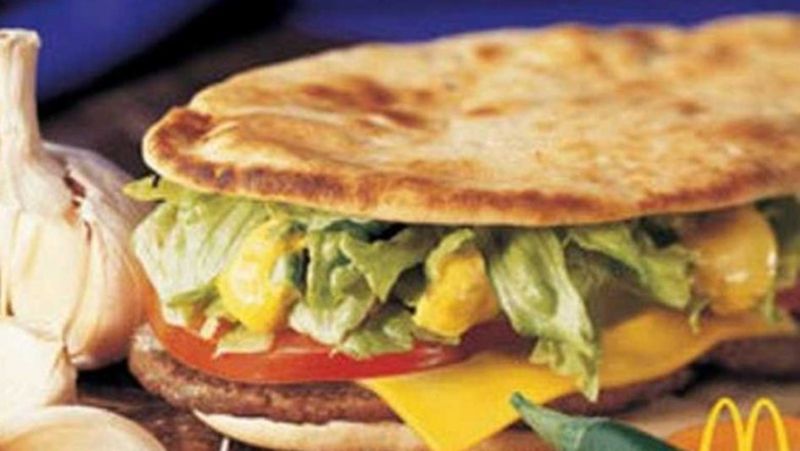
The McAfrica was a limited-time offering designed to introduce African-inspired flavors to McDonald’s customers. It featured a pita bread filled with beef, cheese, and vegetables, aiming to bring a taste of the continent’s diverse culinary landscape. Unfortunately, the sandwich was launched during a famine crisis in Africa, leading to widespread criticism for its insensitivity. The poorly timed release overshadowed the sandwich’s potential appeal and turned it into a public relations nightmare. McAfrica serves as a cautionary tale of the importance of market awareness and cultural sensitivity in product launches.
10. McCrab
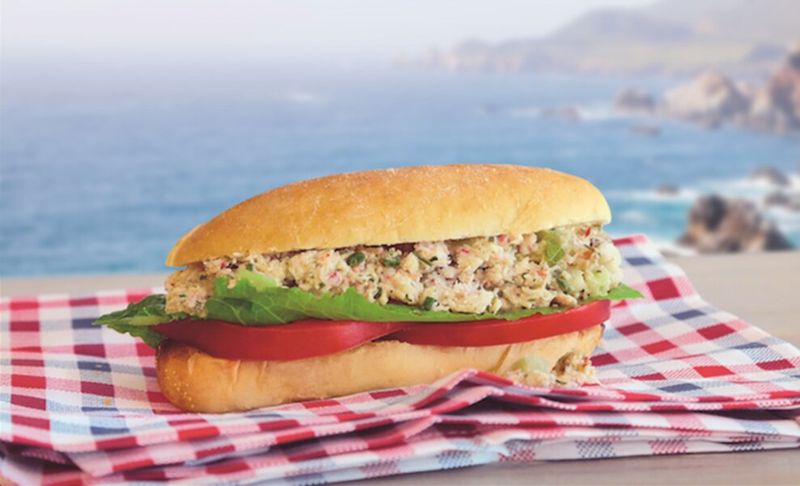
Regionally offered, the McCrab was McDonald’s attempt to capture the essence of a seafood delicacy popular in coastal regions. The sandwich included crab meat mixed with lettuce and dressing, served in a soft bun. However, the reliance on frozen seafood led to inconsistent quality, deterring potential customers. Many found the texture rubbery and the taste lacking genuine crab flavor, which hindered its success. The McCrab’s limited reach and variable reception emphasized the difficulty of replicating fresh seafood experiences in a fast-food context. It quietly disappeared, leaving only a faint memory among adventurous diners.
11. McStuffins (Stuffed Sandwiches)
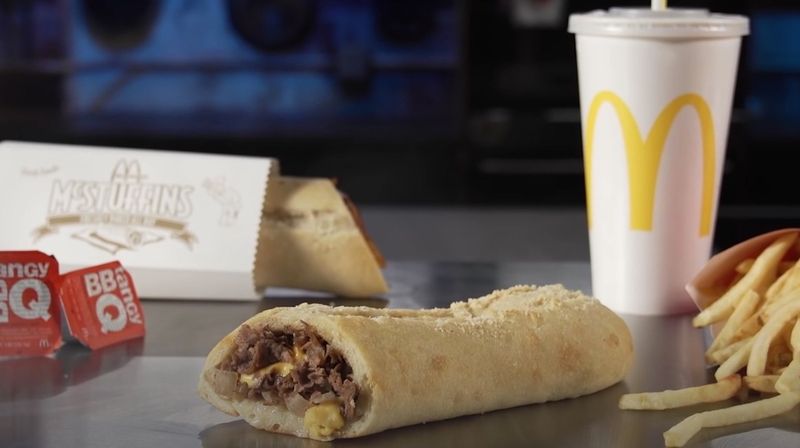
McStuffins, or stuffed sandwiches, sought to offer a portable and hearty meal option within the McDonald’s lineup. These sandwiches were akin to Hot Pockets, featuring bread filled with ingredients like meats, cheeses, and sauces. Despite the convenience, the dry filling and unappealing crust left much to be desired. The absence of a clear identity and inconsistent quality led to its swift exit from menus. McStuffins represented an attempt to blend fast-food ease with diverse flavors, but ultimately underscored the challenge of balancing innovation with customer expectations.
12. McSalad Shakers
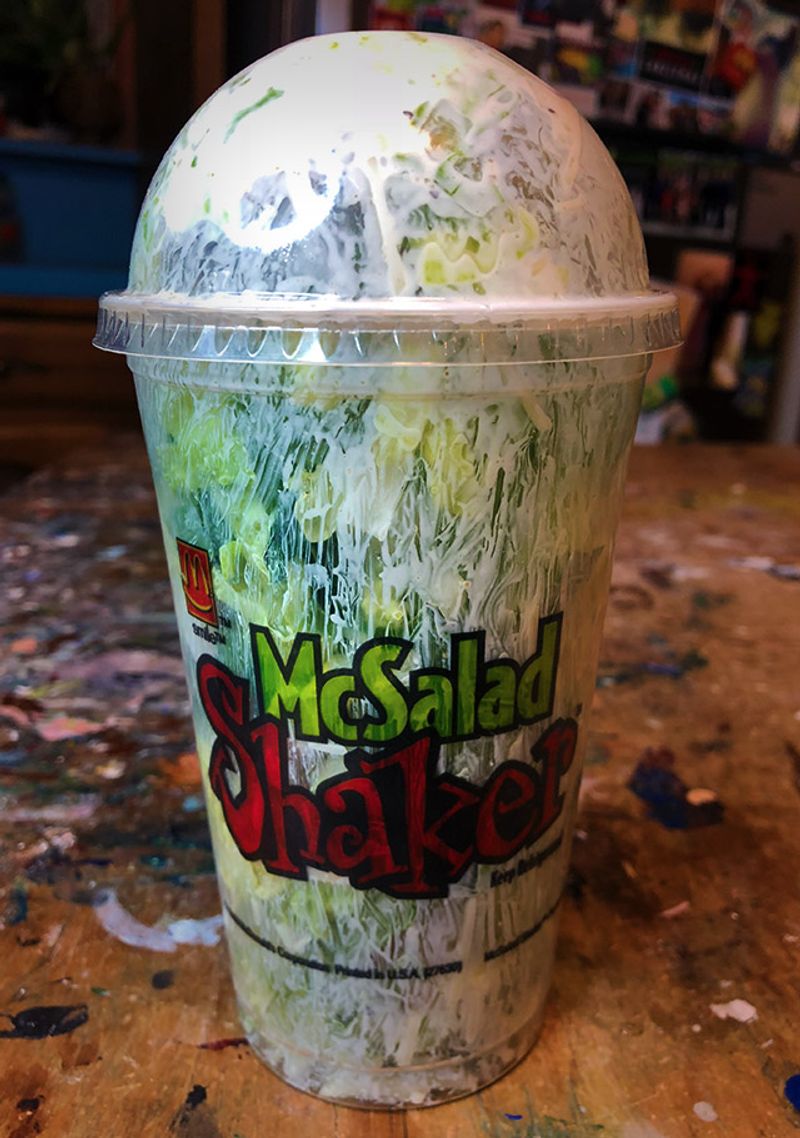
McSalad Shakers were McDonald’s innovative approach to serving salads on the go. Introduced as a portable alternative to traditional salad bowls, these shakers allowed customers to customize their meals by adding dressing and shaking the cup. However, the novelty of the format didn’t translate to a satisfying dining experience. The distribution of dressing often remained uneven, leaving parts of the salad overdressed while others were dry. Despite its convenient concept, McSalad Shakers failed to make a lasting impact and were eventually pulled from the menu, serving as a quirky footnote in McDonald’s history.
13. Fish McBites
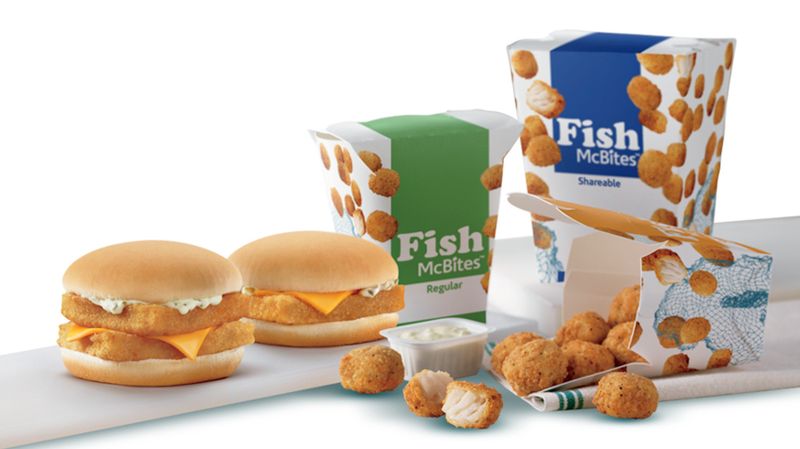
Fish McBites were McDonald’s attempt to tap into the popularity of popcorn-style fast food by offering bite-sized fish pieces. Marketed as a convenient and tasty seafood option, they were intended to complement the Filet-O-Fish. However, the Fish McBites suffered from poor execution, with many customers describing them as mushy and overly fishy. The lack of distinctive flavor and inconsistent texture led to their early discontinuation. Fish McBites highlighted the challenges of diversifying protein offerings in a market dominated by burgers and chicken, ultimately becoming a fleeting experiment in McDonald’s menu history.
14. McLean Deluxe
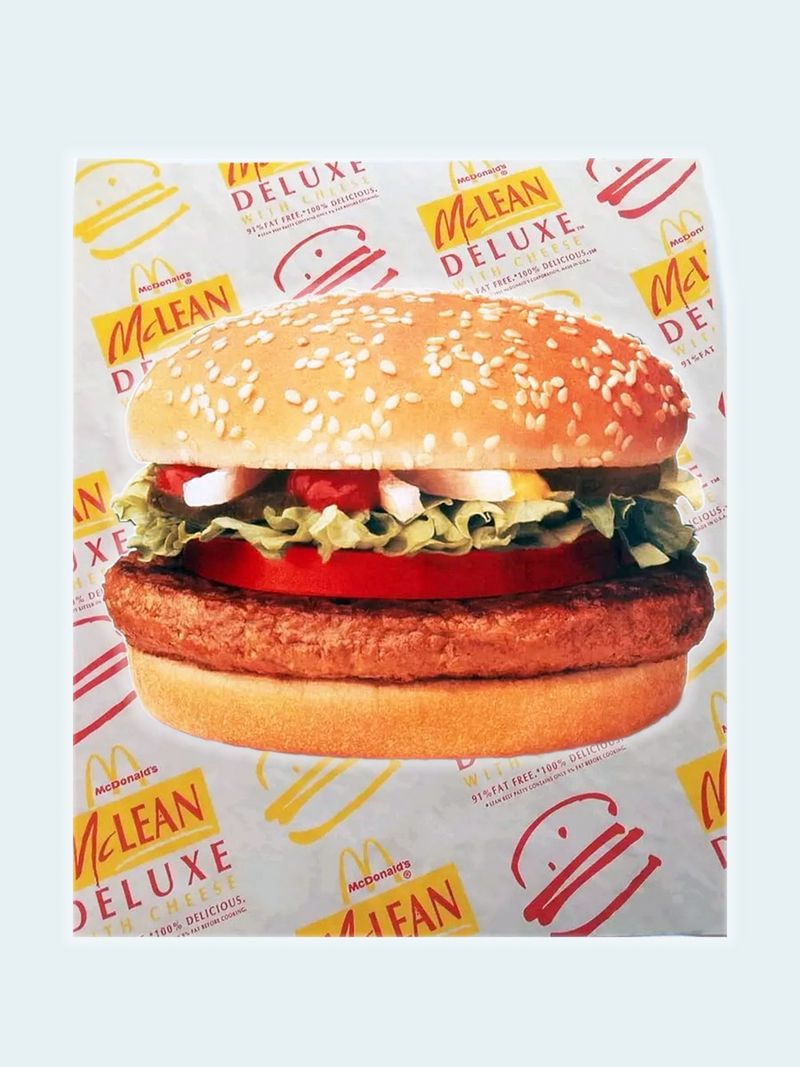
The McLean Deluxe was introduced as a healthier burger option, featuring a lean beef patty with reduced fat content, achieved through the inclusion of seaweed extract. Despite its health-conscious positioning, the McLean Deluxe failed to capture hearts due to its bland taste and unappealing texture. The patty’s unusual composition left customers longing for the juiciness of traditional burgers. This attempt to cater to calorie-conscious diners highlighted the difficulty of balancing flavor with nutrition in fast food. The McLean Deluxe quietly exited the menu, remembered more for its concept than its culinary impact.
15. Mighty Wings
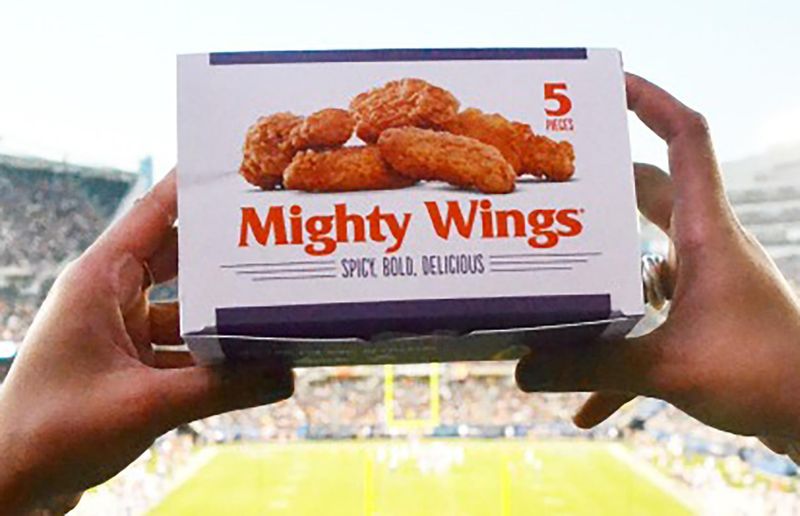
Mighty Wings were McDonald’s entry into the competitive world of chicken wings, offering a spicy and crispy alternative to their traditional menu items. Despite their bold flavor, the high cost and awkwardness of eating wings on the go deterred many customers. The spiciness, while appealing to some, was too intense for others, limiting their broad appeal. Coupled with limited advertising and a challenging price point, Mighty Wings couldn’t sustain their momentum and were eventually phased out. This endeavor highlighted the complexities of introducing niche products into a fast-food lineup.
16. McRib (For Some People)
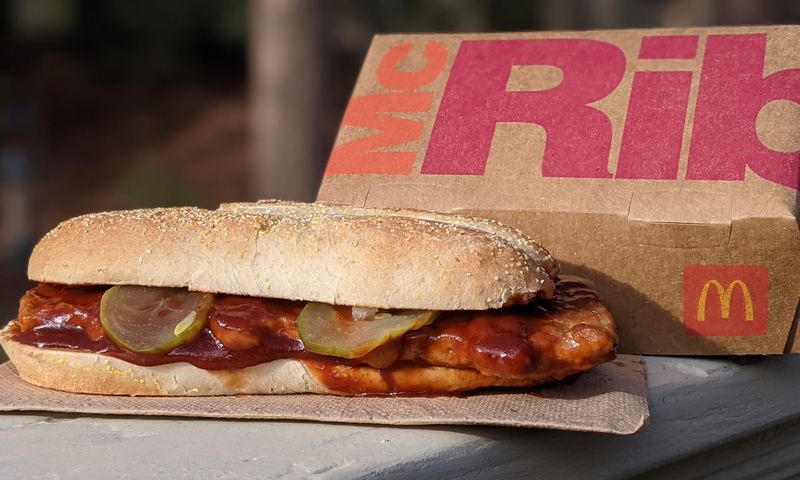
The McRib is one of McDonald’s most polarizing offerings, known for its passionate fan base and equally vocal detractors. Featuring a pork patty shaped like ribs, smothered in barbecue sauce and topped with onions and pickles, it has a unique appeal. However, its unusual texture and heavily processed taste have led many to question its popularity. Despite its contentious nature, the McRib enjoys periodic revivals, drawing crowds eager to revisit its distinct flavor. For some, it remains a quirky staple of the McDonald’s menu, while others are baffled by its enduring presence.
17. Sweet Chili McNuggets
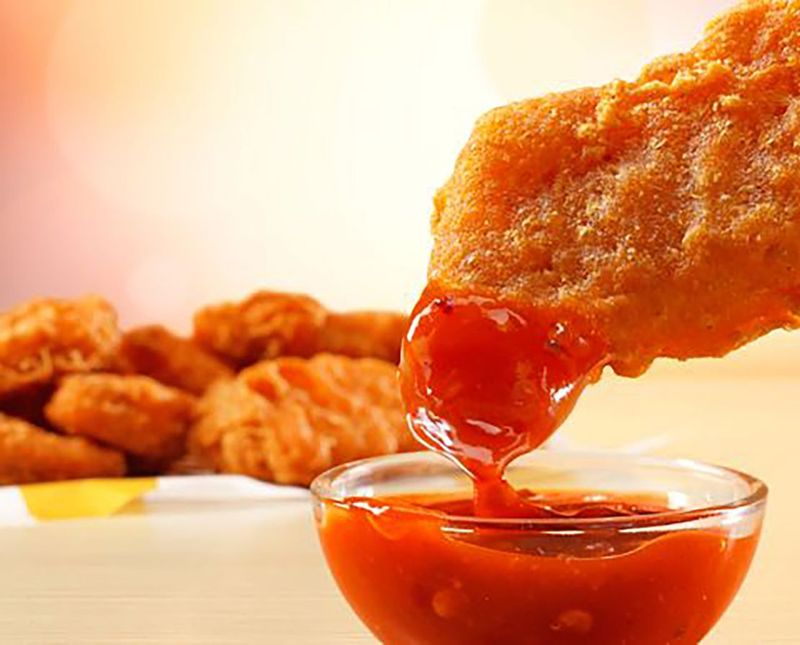
Sweet Chili McNuggets were a limited-time offering that attempted to infuse McDonald’s classic chicken nuggets with a hint of exotic spice. Paired with a sweet chili dipping sauce, they aimed to provide a flavorful twist to a beloved menu item. However, the nuggets failed to deliver the promised punch, with critics finding them neither spicy nor distinctive enough to stand out. Despite the initial intrigue, they quickly faded into obscurity, serving as a testament to the challenges of innovating within well-established favorites.
18. McRice Burger (Asia)
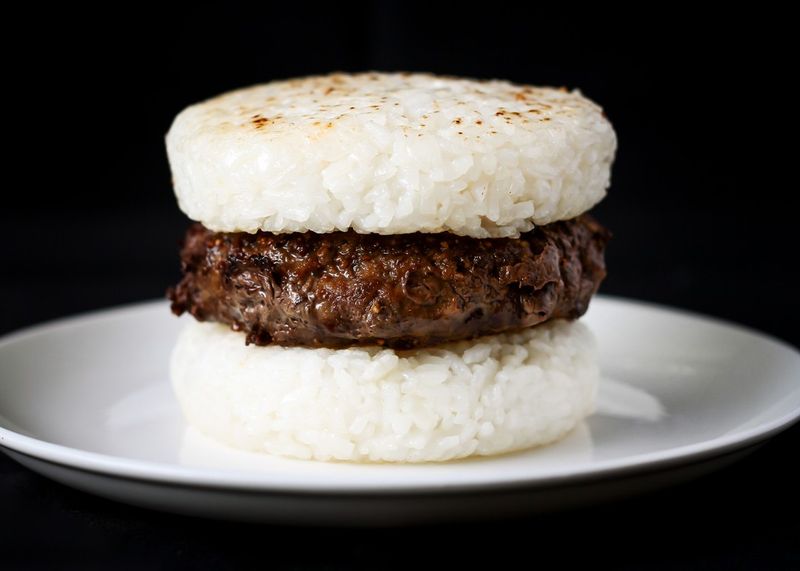
The McRice Burger was a unique offering in select Asian markets, substituting traditional burger buns with rice patties. Aiming to blend familiar fast-food flavors with local culinary traditions, it featured meat and vegetable fillings. While the concept was intriguing, the execution left some diners dissatisfied, as the rice patties’ texture didn’t match the expected bun-like quality. This attempt to innovate for regional tastes underscored the challenges of adapting global fast-food brands to local preferences. Despite its regional appeal, the McRice Burger remains a niche curiosity rather than a menu staple.
19. Taro Pie
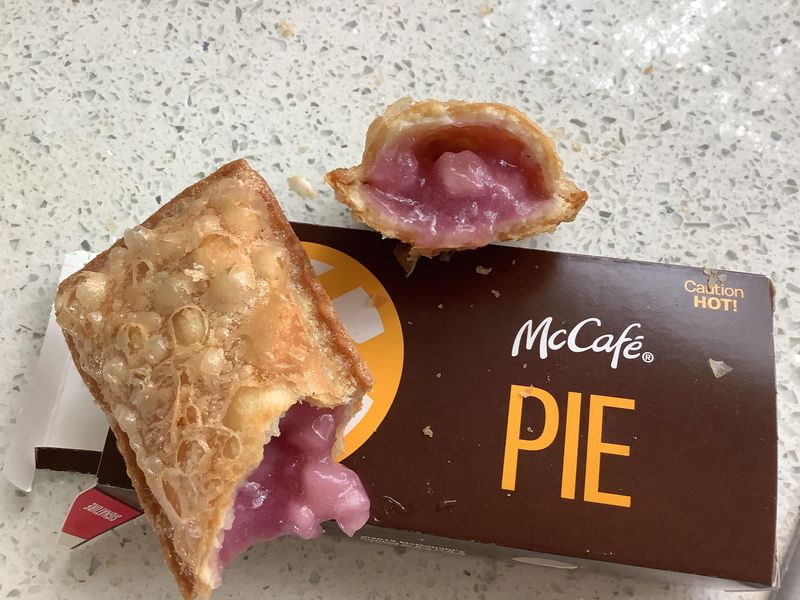
Taro Pie was McDonald’s adventurous take on dessert, introducing the vibrant purple taro root filling within their classic pie crust. Popular in Asian markets, taro offered a unique flavor that intrigued and perplexed customers. The pie’s sweet and earthy taste, coupled with its unusual color, made it a divisive choice among diners. While some appreciated the cultural nod, others found it too unfamiliar. Taro Pie exemplifies McDonald’s willingness to explore diverse flavors, though its appeal remains largely regional, capturing the curious and the nostalgic alike.
20. Chopped Beefsteak Sandwich
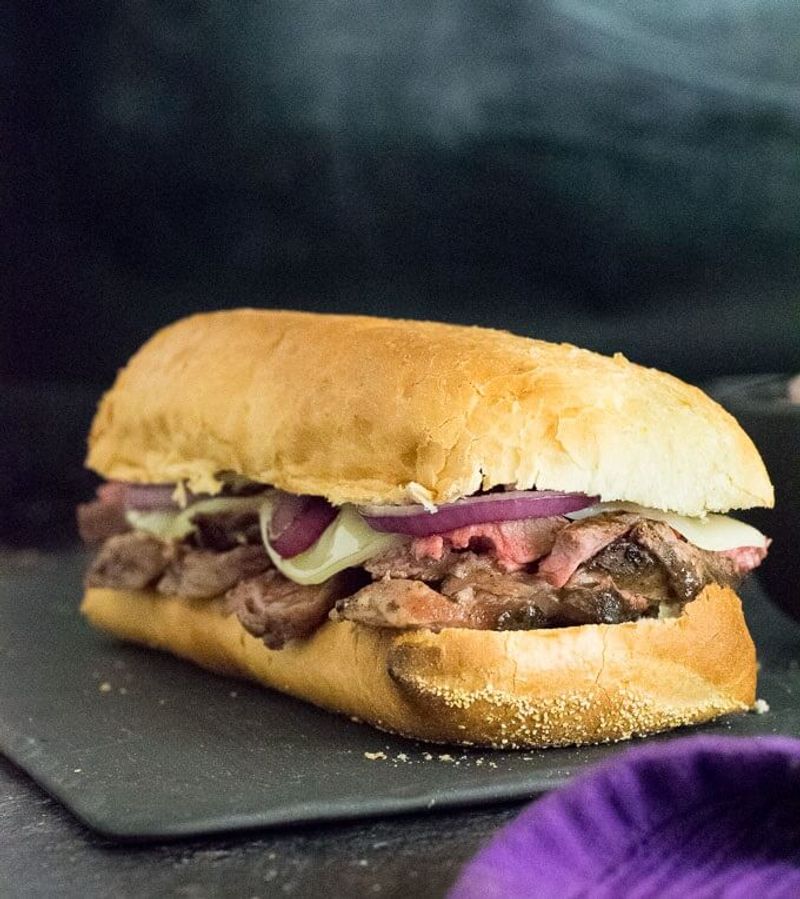
The Chopped Beefsteak Sandwich was McDonald’s attempt to offer a more sophisticated, steakhouse-inspired option. Featuring chopped beef, onions, and sauce on a hoagie roll, it aimed to elevate the fast-food experience. However, the sandwich’s dry meat and soggy bread left diners unimpressed. The promise of a gourmet experience fell short, as the flavors failed to deliver on the expectations set by its marketing. Despite its initial allure, the Chopped Beefsteak Sandwich quietly exited the menu, a reminder of the challenges in bridging fast food with fine dining concepts.
21. Big ‘N Tasty
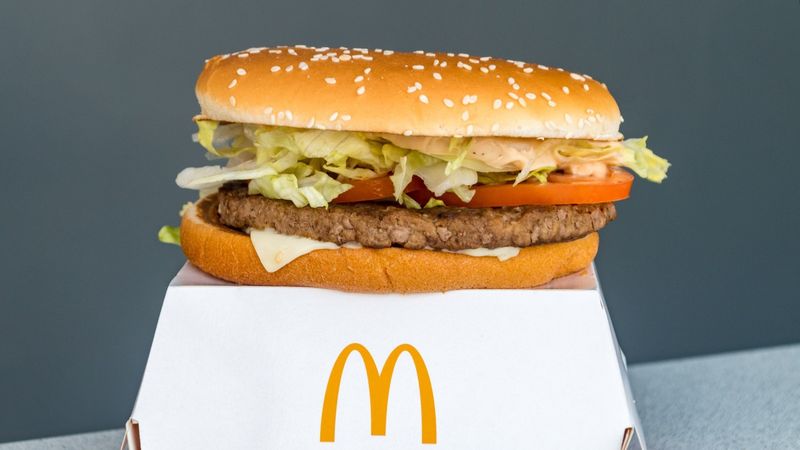
The Big ‘N Tasty was McDonald’s answer to the Burger King Whopper, designed to offer a similarly hearty and flavorful experience. It featured a beef patty topped with lettuce, tomato, onions, and a special sauce. Despite the familiar ingredients, the Big ‘N Tasty struggled to differentiate itself in a crowded market. Customers found it lacking the distinctive taste that made competitors’ offerings memorable. The burger’s inability to carve out a unique identity led to its eventual discontinuation. It remains a symbol of the challenges in creating standout products in a saturated market.
22. McPlant (for some markets)
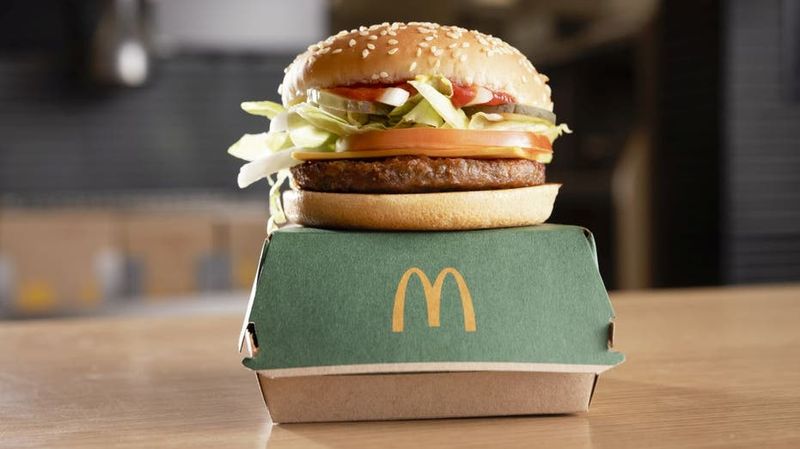
McPlant represented McDonald’s venture into the growing plant-based market, aiming to cater to vegetarians and flexitarians alike. This burger featured a plant-based patty, lettuce, tomato, and sauce. While praised for its environmental consciousness, the McPlant’s texture and flavor struggled to win over traditional meat-lovers. In some markets, it failed to resonate, underscoring the challenge of balancing taste with sustainability. McPlant signifies McDonald’s ongoing efforts to innovate and adapt to changing consumer preferences, even if it remains a niche offering rather than a mainstream success.
23. Blueberry McGriddles
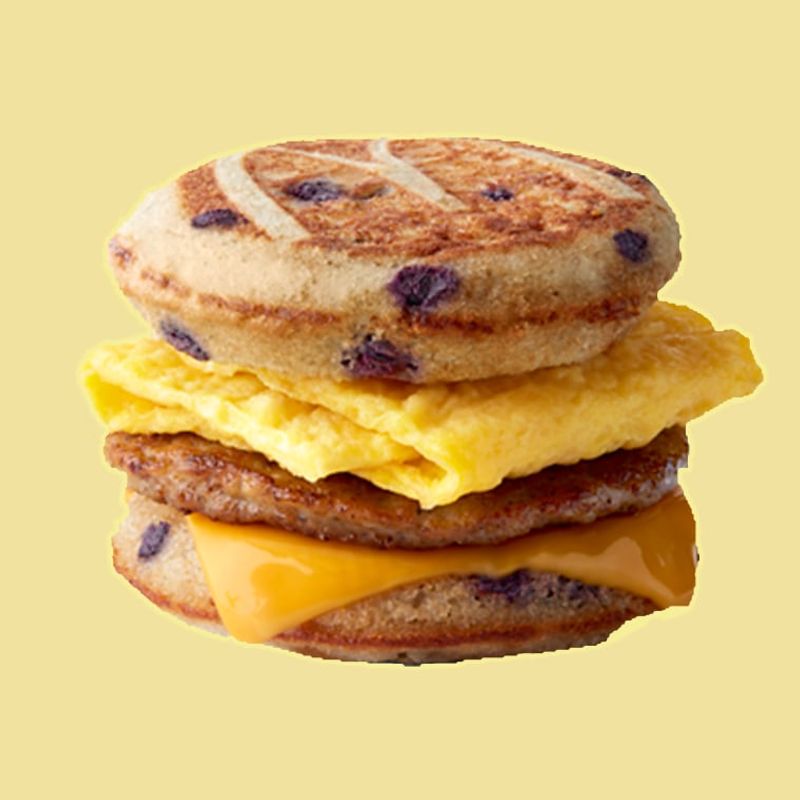
Blueberry McGriddles were a limited-time breakfast item that sought to infuse the beloved McGriddles with a fruity twist. Incorporating blueberry-flavored pancakes, this sandwich combined sweet and savory elements with sausage and cheese. However, the artificial blueberry taste didn’t resonate with all customers, leading to a mixed reception. While some appreciated the novelty, others found it too syrupy and lacking genuine berry flavor. Despite its brief tenure, Blueberry McGriddles highlighted the challenges of innovating within familiar breakfast staples, leaving a fleeting impression on those who tried it.
24. McSoup
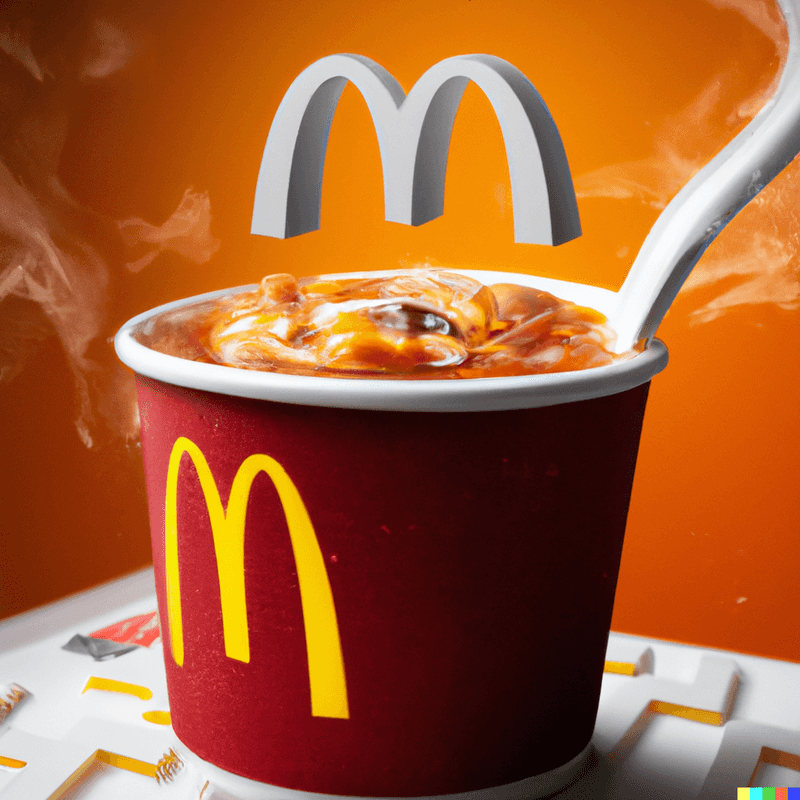
McSoup was McDonald’s attempt to offer a warm, comforting alternative to their standard menu items. Available in select locations, it aimed to provide a quick and easy soup option for diners on the go. However, the concept didn’t align well with McDonald’s fast-food identity, and the soups offered were often criticized for their lackluster flavor. The incongruity of serving soup alongside burgers and fries puzzled customers, leading to its swift removal from the menu. McSoup serves as a curious footnote in McDonald’s history, remembered by few.
25. Cheddar Melt
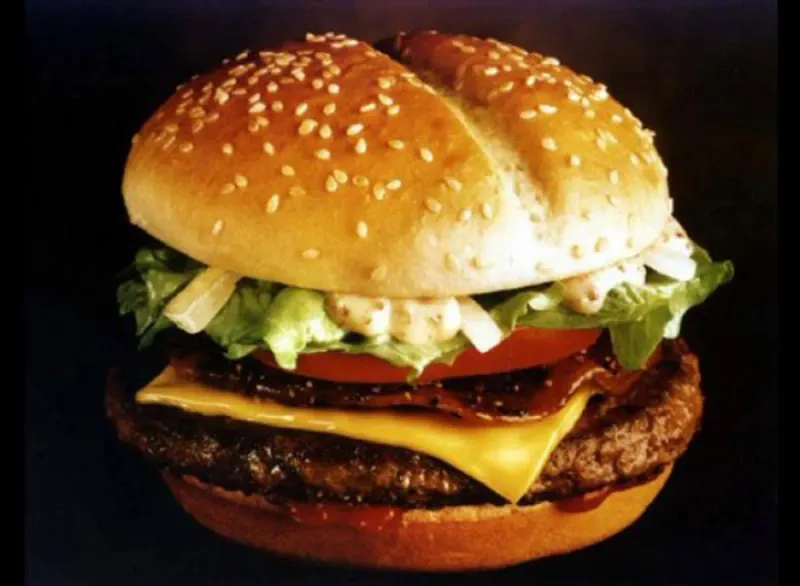
The Cheddar Melt was a bold attempt to introduce a richer, cheese-focused burger to McDonald’s offerings. Featuring a beef patty topped with cheddar cheese sauce and grilled onions, all served on a dark rye bun, it promised a flavorful indulgence. However, the overwhelming richness and greasy texture overwhelmed many diners, making it difficult to enjoy the entire sandwich. The Cheddar Melt’s failure highlighted the delicate balance required in offering indulgent yet satisfying fast-food options. It remains a nostalgic memory for those who experienced its fleeting presence on the menu.
